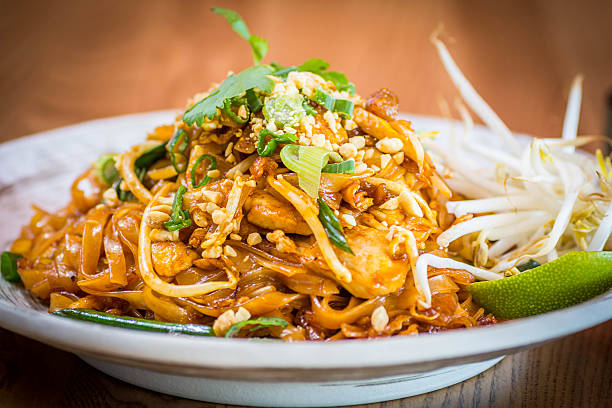While many cherish the idea of a home-cooked meal, there are certain foods that undeniably taste better when enjoyed in the cozy confines of a restaurant. From mouthwatering steaks to fluffy pancakes, these restaurant classics continue to captivate our taste buds. Here’s a closer look at these delectable delights and why they tend to shine brighter in a restaurant setting.
1. Steak: Beyond the Meat
Steak is a beloved dish that often transcends the boundaries of home kitchens. While the cooking method isn’t necessarily the issue, it’s the quality of the meat that distinguishes restaurant-steak from homemade fare. Most grocery store meats are wet-aged, vacuum-sealed, and refrigerated for a mere 10 days. In contrast, steakhouse beef typically undergoes dry aging, a process that involves hanging the meat in a temperature-controlled room and allowing mold to remove moisture. While replicating this at home is possible, it requires careful monitoring and cleanliness to avoid spoilage.
2. French Fries: The Art of Frying
Fast food and restaurant french fries possess a tantalizing appeal that’s hard to replicate at home. One secret to their crispy perfection is the use of russet potatoes, known for their high starch content, leading to a fluffy interior and a crispy exterior. Commercial fryers in restaurants maintain a consistency that is challenging to achieve with smaller home fryers. Additionally, restaurant frying oil is often reused, improving the crispiness of the fries over time.
3. Pad Thai: The Heat of Authenticity
Pad Thai, a beloved Thai street food, often tastes better when savored in a restaurant. Achieving that perfect balance of flavors requires high heat during cooking. Restaurants pay meticulous attention to the cooking process, ensuring that ingredients are added in a specific order to preserve the dish’s authenticity. Following these methods at home, along with making your own sauce, can bring restaurant-quality Pad Thai to your table.
4. Fried Rice: The Elusive Wok Hei
Wok hei, or the “breath of a wok,” is the secret to exceptional fried rice, and it’s something that’s difficult to replicate at home. Wok hei is the unique flavor and aroma imparted by high heat and a wok. Most restaurants use woks directly on gas ranges, achieving the ideal wok hei. Home cooks can try to mimic this by using a wok and ensuring it’s adequately heated before adding ingredients.
5. Vegetables: Elevating the Greens
Vegetables in restaurants often taste more flavorful due to the generous use of butter, salt, and a variety of fats and seasonings. Different cooking techniques like roasting and grilling are employed, providing unique textures and flavors. Blanching vegetables in salt water before cooking also contributes to their crispiness and flavor, a technique worth adopting at home.
6. Sushi: Quality and Mastery
Sushi’s simplicity highlights the importance of quality ingredients and expert preparation. The quality of fish is paramount, and sushi chefs undergo rigorous training, sometimes lasting over a decade, before earning their titles. While making sushi at home is possible, it’s essential to prioritize freshness and use precise techniques to match the quality of a restaurant.
7. Tacos: Crafting Tortillas
Handmade tortillas are key to exceptional homemade tacos. Whether corn or flour, crafting your own tortillas allows you to achieve the perfect texture and flavor. Utilizing high-protein flour and cooking them at the right temperature ensures that your tortillas rival those from a restaurant.
8. Pizza: The Power of Ovens
Pizza, a universally beloved dish, thrives in restaurant settings due to the use of pizza ovens. These specialized ovens reach much higher temperatures than home ovens, resulting in a perfect crust. Additionally, the sauce for pizza differs from pasta sauce, as it is applied raw to avoid overcooking in the hot oven.
9. Salad: Dressing and Diversity
Restaurant salads often excel due to the liberal use of dressing, seasoning, and a blend of various greens and ingredients. Seasoning greens before adding dressing, using different fats, and experimenting with fresh herbs and cheeses can elevate homemade salads to a restaurant-worthy status.
10. Pancakes: Perfecting the Fluff
Fluffy pancakes, a breakfast favorite, typically taste better in diners due to careful preparation. Keeping ingredients cold and avoiding overmixing are crucial. Low to medium heat and slow cooking are recommended to avoid dry, rubbery pancakes. While restaurants often use griddles, baking pancakes on a sheet pan at home can yield a large batch of fluffy pancakes.
11. Scrambled Eggs: The Art of Timing
Perfect scrambled eggs, often a diner specialty, require specific techniques. Avoid adding milk, as it can make eggs rubbery. Instead, use water to create steam, resulting in fluffier eggs. Cooking over low to medium heat is essential for the right texture. Some chefs even cook scrambled eggs for up to 30 minutes to achieve the ideal consistency.
12. Indian Curries: The Culinary Process
Indian curries, rich in flavor and complexity, benefit from a distinct cooking process. Chefs start by tempering whole spices in oil to infuse flavors. Aromatics like onions and tomatoes follow, along with powdered spices, vegetables, or proteins. The base of the curry gravy is added next, followed by garnishes like cilantro. Using the right ingredients as specified in the recipe, without substitutions, and maintaining a balance of fats is crucial when attempting restaurant-style Indian curries at home.
13. Phở: A Complex Broth
Phở, a Vietnamese delicacy, relies heavily on a high-quality broth, often a product of time-intensive preparation. Making bone stock from scratch can elevate homemade phở, utilizing cuts of meat that are more affordable and less commonly used. While it may require patience and effort, crafting your own phở can yield satisfying results.
14. Sandwiches: The Art of Construction
A perfect sandwich, found in delis and restaurants, hinges on expert construction techniques. Spreading butter or mayonnaise on bread before adding ingredients creates a “hydrophobic barrier” to prevent sogginess. Ensuring symmetry and seasoning ingredients before assembling the sandwich are key factors. Using high-quality, well-seasoned ingredients and fresh, homemade bread can further enhance your homemade sandwich.

